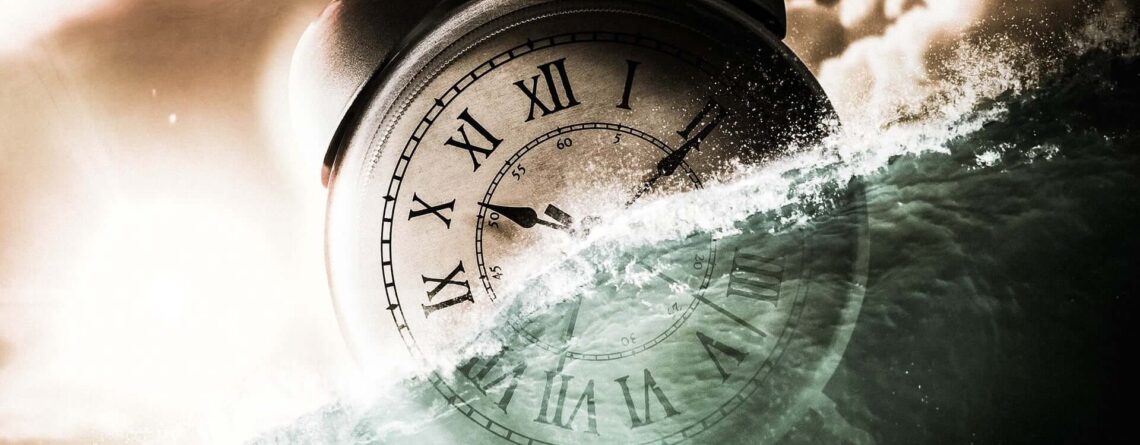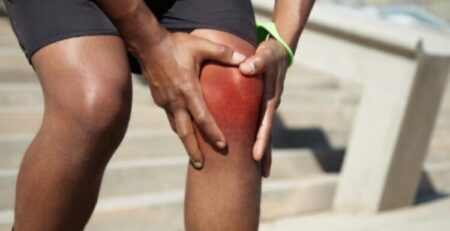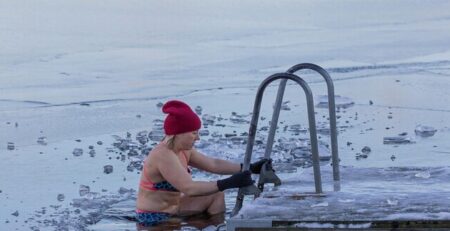Many people swear by a short cold spell and believe that this is enough. However, it should not be too short, but also not too long. So what is a duration that makes sense?
Table of contents
Pain and trembling are a good indicator to stop
“The ice bath should not exceed three minutes,“ explains Hanns-Christian Gunga, Professor of Space Medicine and Extreme Environments at the Charité in Berlin. Other sources speak of up to 5 minutes. As with saunas, it is not possible to say exactly when you should stop ice bathing. Ultimately, you should mainly listen to your own body. As soon as it hurts too much and you start shivering badly, you should definitely stop ice bathing.

Try to stay in the ice bath for between 2 and 5 minutes
To summarize, you should try to stay in the ice bath for a certain amount of time, otherwise there will be insufficient effect. Even a sauna or workout won’t do you any good if you lift a dumbbell exactly three times or only stay in the sauna for a few seconds – you will notice almost no effect. The minimum time for an ice bath, once you have exercised a few times, should be at least 2 minutes. So if you’re aiming for 2-5 minutes, that’s a great amount of time to enjoy the full positive effects of the cold bath.
Dosage for ice baths according to the Russian doctors Latyshev and Bokshej
The two Russian doctors have drawn up a table that gives you a good indication of how long you should stay in the water and at what temperature. The differences between beginners and trained people are quite significant. This means that ice swimming can definitely be trained and the longer you do it, the longer you can stay in the cold water. At a water temperature of 15 °C, the two doctors say that a trained person can stay in the water approx. 30 times longer than untrained beginners.
| Water temperature | Beginners | Advanced | Trained |
|---|---|---|---|
| 0°C | 5 – 30 s | 30 s – 1:15 min | 3 – 5 min |
| 5°C | 10 – 25 s | 45 s – 1:30 min | 5 – 10 min |
| 10°C | 12 – 35 s | 50 s – 2 min | 8 – 16 min |
| 15°C | 15 – 55 s | 1:15 – 4 min | 17 – 30 min |
Good rule of thumb: Ratio of water temperature to duration
It is also clear that the colder the water, the more training you need and the shorter you can stay in it. It therefore makes sense to look at these two parameters in relation to each other and use the following formula as a guide:
Water temperature (in degrees Celsius) = Time (in minutes)
10 degrees = 10 minutes
9 degrees = 9 minutes
etc.
<= 2 degrees = 2 minutes
Table: Relationship between water temperature, bathing time and body temperature
If you want to do it scientifically, you can use the table below as a guide. It provides information about the time in which the body temperature decreases relative to the water temperature. The table can be read as follows: In the first column you can see the water temperature and, depending on this, the bathing time to lose either – 0.5°C in body temperature or – 1°C. Obviously, the warmer the water, the longer it takes for your body to cool down by 1 degree Celsius.
It is interesting in this respect that the core body temperature (CCT) decreases exponentially with the water temperature. At 20°C water temperature it takes 20 minutes to cool down by 1°C, at 10°C water temperature it only takes 4:38 minutes.
| Water temperature °C | Temperature drop KKT in °C / min | Bathing time for -0.5°C KKT | Bathing time for -1°C KKT |
| 20 | – 0,05 | 10:00 | 20:00 |
| 19 | – 0,07 | 07:30 | 15:00 |
| 18 | – 0,08 | 06:00 | 12:00 |
| 17 | – 0,10 | 05:00 | 10:00 |
| 16 | – 0,12 | 04:17 | 08:34 |
| 15 | – 0,13 | 03:45 | 07:30 |
| 14 | – 0,15 | 03:20 | 06:40 |
| 13 | – 0,17 | 03:00 | 06:00 |
| 12 | – 0,18 | 02:44 | 05:24 |
| 11 | – 0,20 | 02:30 | 05:00 |
| 10 | – 0,22 | 02:19 | 04:38 |
| 9 | – 0,23 | 02:09 | 04:18 |
| 8 | – 0,25 | 02:00 | 04:00 |
| 7 | – 0,27 | 01:53 | 03:46 |
| 6 | – 0,28 | 01:46 | 03:32 |
| 5 | – 0,30 | 01:40 | 03:20 |
| 4 | – 0,32 | 01:35 | 03:10 |
| 3 | – 0,33 | 01:30 | 03:00 |
| 2 | – 0,35 | 01:26 | 02:52 |
| 1 | – 0,37 | 01:22 | 02:44 |
| 0 | – 0,38 | 01:18 | 02:36 |
Avoid hypothermia
First of all, what is hypothermia? Hypo is the ancient Greek preposition for “under” and thermos means “hot, warm, boiling”. Hypothermia therefore refers to the underheating of the body – an abnormally low body temperature that can be caused, for example, by severe exhaustion, illness or even artificially. Hypothermia in other words.
Hypothermia is defined as a core body temperature of 36°C or higher. The core body temperature refers to the temperature of your internal body. There are different levels,
- mild hypothermia (32-35°C)
- moderate hypothermia (28 -32°C)
- Severe hypothermia (below 28°C)
If your temperature falls below 32°C, you should seek medical attention, as this limit is critical and can result in permanent damage or even death.
Humans have a core body temperature of approx. 37°C. This means that hypothermia of just 2°C is the highest level of mild hypothermia. If we look at the temperature list above again, it takes around 3 minutes for your body to cool down by 1°C in 3°C cold water. So if you stay in 3°C cold water for 15 minutes, your core body temperature will drop by a full 5°C, which means you will reach moderate hypothermia and enter a critical situation.
Studies have shown that people can hardly move for around 15 minutes after falling into an ice hole. The extremities in particular are no longer well supplied with blood, which means that you can also suffer frostbite.
A maximum of 10 minutes ice bathing for experienced swimmers at 5°C
So what is the maximum duration? At a water temperature of around 5°C, even experienced ice bathers should only be in the water for a maximum of 10 minutes. According to our rule of thumb (water temperature = time in minutes), that would only be 5 minutes, so you would clearly exceed this guideline. That would mean a drop in core body temperature of around 3°C, which is achievable with training. But this should not be seen as a recommendation, because ultimately it’s about feeling comfortable both in the water and afterwards.
It’s best to leave the watch off completely, at least at the beginning. Of course, you should overcome the impulse to get out again after a few seconds. Anything over 2 minutes is an extremely great achievement.
The longer you stay in the ice water, the lower your marginal benefit. In other words, every minute longer after the 2-5 minutes will no longer bring you the same benefits as the first few minutes. And you will notice: The longer you stay in the water, the more your body cools down and the longer it takes you to thaw out again.










Leave a Reply